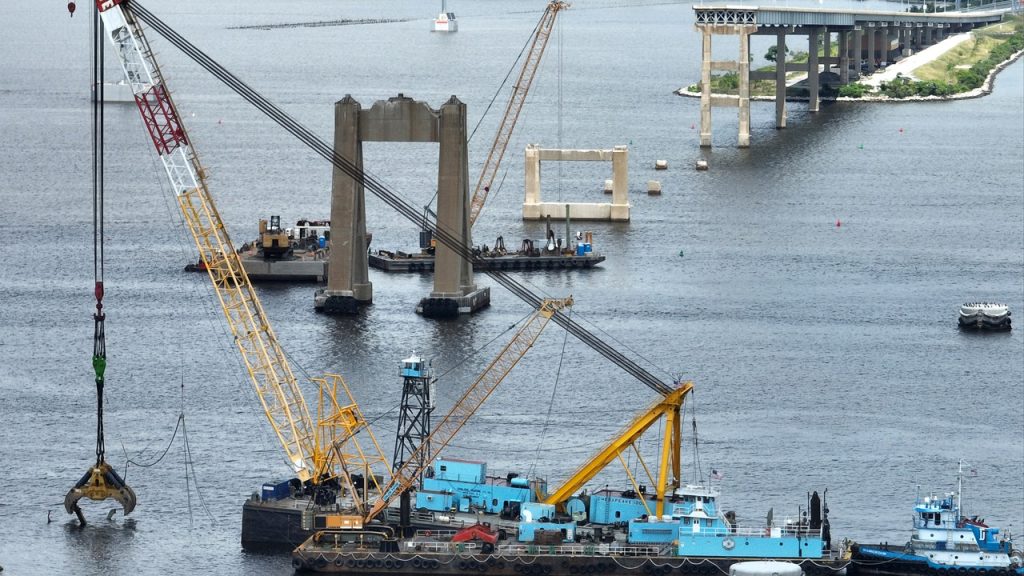Authorities are expecting commercial shipping traffic through the Port of Baltimore to return to normal levels after the waterway fully reopened following the collapse of the Francis Scott Key Bridge. The salvage operations for the collapsed bridge are estimated to cost up to $75 million, while the rebuilding of the bridge could cost nearly $2 billion. The exact causes of the electrical issues that caused the cargo ship Dali to lose power and crash into the bridge are still being investigated. Although some shipping companies rerouted their cargo to other ports during the cleanup efforts, officials anticipate they will return now that the channel has been restored to its original depth and width.
Some cruise ships and large container ships have already passed through the reopened channel, and shipping companies that avoided Baltimore during the cleanup efforts are expected to resume operations. The city’s port handles the processing of more cars and farm equipment than any other in the country. Officials have estimated that the salvage operations for the collapsed bridge will cost up to $75 million, while the Coast Guard response has cost $24 million to date. Rebuilding the bridge is projected to cost nearly $2 billion, with a completion goal set for 2028. The Biden administration has approved $60 million in immediate federal aid as a “down payment” on the rebuilding process, with the promise of full coverage from the federal government.
President Joe Biden has vowed to support Baltimore throughout the rebuilding efforts until the bridge is completed. The cargo ship Dali, which caused the collapse of the Francis Scott Key Bridge, crashed into a crucial support column after losing power on March 26, resulting in the deaths of six roadwork crew members. The ship had experienced power outages before starting its voyage to Sri Lanka, however the exact causes of these issues are still under investigation. The FBI is conducting a criminal investigation into the circumstances surrounding the collapse. The Dali remained stuck amid the wreckage for nearly two months before being refloated and guided back to port on May 20, allowing for the reopening of the channel to commercial traffic.
Thousands of longshoremen, truckers, and small business owners have been impacted by the collapse and resulting economic effects that stretched beyond the Baltimore region. The disaster halted most maritime traffic through the busy port as crews worked tirelessly to clear an estimated 50,000 tons of debris from the river. The reopening of the channel in phases has gradually restored commercial traffic, with the city expecting a return to normal operations. The Coast Guard response has cost $24 million to date, and officials are hopeful that rebuilding the bridge will be completed by 2028. President Biden has assured Baltimore of continued support throughout the rebuilding process. Additional safety requirements have been lifted now that the channel has reopened with its full width, allowing for two-way traffic to resume.


